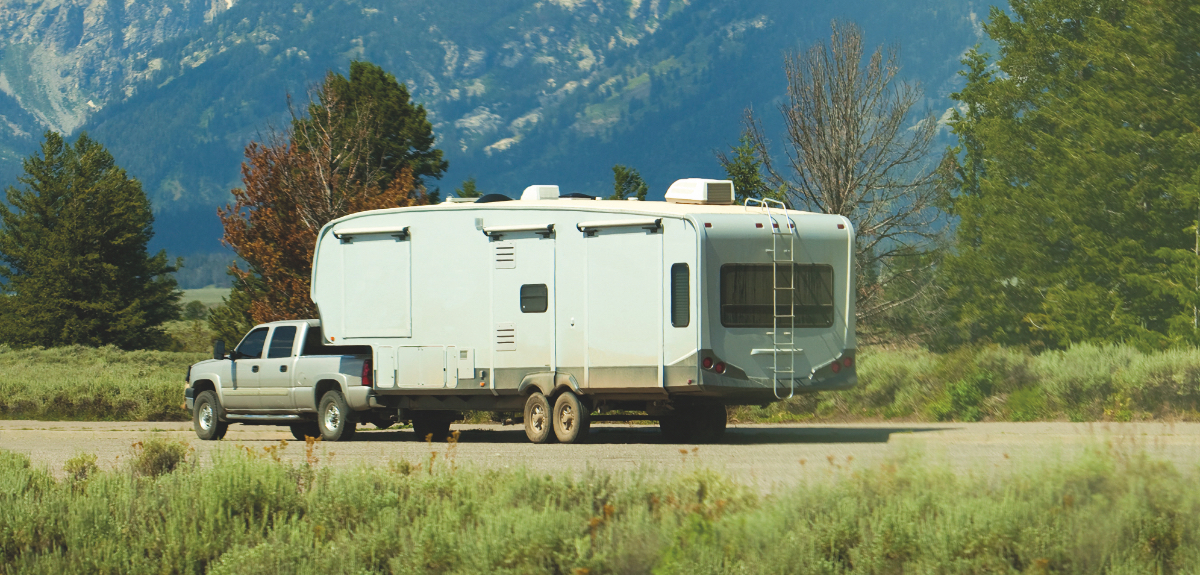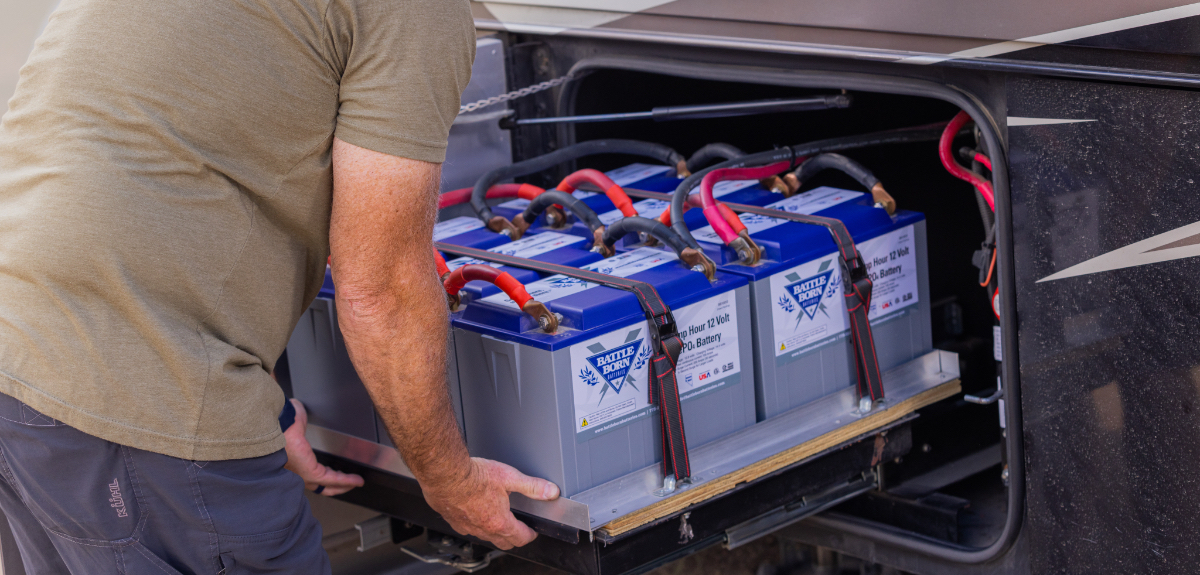Tech Q&A — August, 2023
QC Matters, Trailer-Suspension Upgrade, Installing LEDs, and Roof Materials
Image Caption:
Quality Control Concerns
Q: Why are RVs being produced with shoddy construction? My husband and I are seasoned campers. We were thinking about trading our 2022 Coleman 18-footer for a 2023 model. We stopped at an RV dealer while traveling and were very disheartened at the new models being shown to us.
As we all know, RVs have gotten more expensive, but the workmanship has gotten worse. My question is, why? Where is quality control? RVs are being built with seams not being even, glue being thrown onto walls and flooring, wherein it leaves an awful-looking mess. The trim and what I call wheel well moldings, etc., are crooked; I can go on. We have owned a 2020 Jayco and a 2022 Coleman and have made upgrades, which apparently doesn’t matter in a trade. Aren’t there people in place to check things out before they put them in a dealership?
—Patricia Ptaszynski, via email
A: I’ve been involved with the RV industry since the 1970s, and people were complaining about RV quality even back then. The higher RV prices are, unfortunately, in lockstep with higher prices for most consumer goods and are caused by many of the same situations.
The COVID shutdowns created supply issues and mandated closures and layoffs, causing manufacturers to lose skilled, experienced workers. This all happened at the same time RV sales were at all-time highs, resulting in shortages driving up prices and creating a situation where production lines were strained and overall quality dropped. To make matters worse, some companies’ management is more concerned with profits and stock prices than quality. The manufacturers earn millions of dollars in profits and don’t seem to route much of that cash back into quality control.
Consumers also contribute to the situation by shopping only for the lowest prices, not taking time to learn which manufacturers have the best quality, and accepting poor quality instead of refusing to buy into it.
Travel Trailer Suspension Upgrade
Q: I’m seeking advice regarding a possible upgrade to the suspension of my 2019 Grand Design Reflection travel trailer. This is a 33-foot unit with a GVWR of 9,495 pounds. It has tandem Dexter axles with GAWR of 4,400 pounds each. We’ve logged approximately 19,000 miles to date and are now planning a long cross-country trip for later this year.
Is it worth replacing the stock suspension components with a heavier equalizer, heavier shackles, bronze leaf spring bushings, and wet bolts? This would be a purely preventive measure, as I am not aware of any problems with the current system. If such an upgrade would be worthwhile, are there any downsides, such as adverse pressure on leaf springs, effects on towing, etc.? I welcome any thoughts.
—Paul Dice, Magnolia, New Jersey
A: I highly recommend this type of upgrade for any trailer owners who plan to keep their rigs and put some miles on them. The upgrades you mention will improve durability. Unfortunately, many RV manufacturers cut corners on suspension to save money because buyers typically don’t notice it until years later when the original parts fail. I also recommend regular inspections and lubrication of the chassis components.
Changing Lights to LEDs
Q: We have a 2007 Keystone Kargoroo Outback toy hauler, and I would like to change the lights to LEDs. Can I just change the bulbs, or do I have to change anything else? We read the Tech Q&A section each month. You have helped lots of people with answers to their questions, and I hope you can help us. I have just changed out the lights in my home shop, and I would now like to swap them out on the trailer. Thank you for answering not only my question but also those from other readers.
—Herb Williams, Lonoke, Arkansas
A: Yes, you can just change the bulbs, but LEDs are polarity sensitive, so if they are wired wrong, they won’t light. The ones with metal bases should work without a problem. If you install a bulb that doesn’t have a metal base and can be installed in either direction, such as a dome light bulb, if it doesn’t work when installed, simply swap ends and try it again. The same goes for LEDs with two wires coming out of them— just swap leads if, at first, they don’t work.
Update: Later, I again heard from Mr. Williams: “Thank you very much for the help with the LED lights. We were able to change them out with no trouble. Just needed someone to get me started. Again, thanks.”
Roof Material
Q: We have a 2020 Coachmen Freelander 27QB Class C motorhome. I have been trying to find out what type of roof material it has and what I can protect it with from the sun and weather.
—Richard St John, Owasso, Oklahoma
A: It’s important to frequently inspect and care for RV roofs, as leaks can cause extensive damage. There are two major categories of RV roofing materials in common use: ethylene propylene diene monomer (this is why most folks just call it EPDM) and thermoplastic polyolefins or TPO. EPDM is white on one side and black on the other. TPO is white on both sides.
Because Dicor makes most of the roofing used in the RV industry, I suggest using its free online reference library. Then refer to the video “Determine whether your RV roof has an EPDM or TPO RV roof.” Once you have determined which type your RV has, go to Roof Products. You should be able to readily determine what products you need and order them from Dicor or get them from your local RV dealer or Camping World store.
Engine Charging of Coach Batteries
Q: Is it normal or common for the engine alternator of a Class A gasoline motorhome to charge the coach batteries whilst in motion? If so, what is a typical charge rate that can be expected? I have a 2004 Triple E Embassy motorhome, and after a recent day’s driving, the (fairly new) deep-cycle coach batteries were flat, having been fully charged the previous night in a campground.
While I am investigating why that might have happened, it would help if I could understand whether the coach engine should have helped keep the batteries charged. I have never seen this topic discussed in all my years of reading the magazine and it seems important, particularly for those who spend successive nights dry camping.
—Paul Fryer, Belleville, Ontario, Canada
A: Normally, the alternator does charge the coach batteries along with the engine battery. There are various devices that switch the current to the coach batteries, including relays and electronic circuits. The current varies based on the alternator output, size, and state of charge of all batteries and any current-limiting devices that may be in the circuit. Current may vary from a few amps to perhaps over 100 in some cases.
You need to find out why the batteries were flat so soon. Even if they weren’t getting charged, they shouldn’t have become completely discharged during a day of driving unless there was a heavy load on them or bad connections. Never leave batteries deeply discharged; recharge them as soon as you find out they are discharged, as leaving them discharged quickly leads to sulfation, and they may be unrecoverable.
With the batteries charged, measure their voltage at rest (without being actively charged), which should show 12.6 volts if fully charged. Start the engine and again take a voltage reading. If the voltage begins to climb and tops out around 13.6 to 14.2 volts, the alternator is charging your coach batteries. Also, do the same for the engine-starting battery.
Brakes Dragging
Q: I have a 2018 Jayco Jay Flight 26RLS trailer. I remove the wheels and repack the bearings every 8,000–10,000 miles, and almost every time that I do it, I discover that the brakes on one or more of the wheels are dragging. I adjust the brakes so that the wheel turns freely, but the next time that I do the repacking, I discover that the brakes are dragging again. Is there a common cause to this, or is it most likely a faulty brake mechanism?
—Mike Corn, New Orleans, Louisiana
A: Are all the brakes dragging, or just random single ones? Inspect the dragging ones carefully and compare them to the others. Make sure that the actuating arm of the assembly (the metal arm that holds the brake magnet) is in front of the spindle and not behind it. New Orleans is quite moist, and you may be getting corrosion in the brakes, especially if you are near saltwater.
Battery Voltage
Q: I have an 18-foot Lance trailer. Why does the 12-volt battery register at 13.3 volts when fully charged?
—Terry Patterson-Hale, Sacramento, California
A: In order to fully charge the battery, the charging system must use a higher voltage to “push” energy into the cells. A fully charged 12-volt lead-acid battery should actually read 12.66 volts at rest when 100% charged. The slightly higher reading should dissipate after it sits for a while without being charged.
More Battery Problems
Q: I have a 2018 Thor Chateau Class C motorhome with 13,000 miles on the odometer. It will not start after being placed in storage. I jump-started the battery, let the engine run, and turned it off. I tried restarting it again, and it would not start. I think it might have a bad battery or a bad alternator. The engine battery is new.
—Joe Garcia, Lakeland, Florida
A: Motorhomes have a number of small current draws, such as alarms and circuit boards, that will discharge the batteries over time. This is what likely happened. When batteries are deeply discharged or left discharged for a period of time (even overnight), they may become sulfated and ruined. This may have happened to your RV’s battery. Take the battery to an auto-parts store for free testing. If it is bad, have it replaced. After you get the engine running, have the alternator tested. It can be done on the vehicle; when the engine is running, the battery voltage should rise to about 13.6–14.2 volts if the alternator is working.
If you store the coach outdoors, add a solar panel to keep the batteries charged. If it’s indoors, use a maintenance charger, or if there’s no plug available, take the batteries home and maintenance charge them there.
RV Window Repair
Q: We have a Class A 32-foot Commander motorhome by Triple E, model A3202FB. I’m looking for a company on the West Coast that repairs or replaces RV double-glazed side windows. I’m in British Columbia, Canada, but travel south generally for the winter.
—Howard Soanes, Vernon, British Columbia, Canada
A: This is known as “fogged windows,” and we have an archived article on our website that covers this topic. To have it repaired, try RV Glass Solutions.
Refrigerator Problem
Q: I really enjoy reading your Tech Q&A section. I noted an email from John Gattignolo from Valdosta, Georgia, in the October 2022 issue regarding his RV’s Norcold refrigerator showing no 120-volt AC power. We had this same issue in our 2017 Keystone Avalanche fifth-wheel. I did some research and found the culprit to be a ground fault circuit interrupter (GFCI) trip in one of the RV’s electrical outlets. I reset the switch, and the refrigerator works fine. It still does this on occasion, though.
—Bob Staples, Houston, Texas
A: Thanks for the note, Bob. Sometimes moisture in the receptacle or plug can cause this. That’s particularly likely in moist, humid areas like Houston. If the GFCI outlet is corroded or overly sensitive, it can be inexpensively replaced.
Reader Tip: Trailer Bike Rack Revisited
In response to Tom Miller’s search for an e-bike rack in the May issue: We have a 2017 Wildcat 343BIK trailer, and I had the same problem as he did. I couldn’t find racks designed for travel trailers. I finally purchased a rack from Hyperax through Amazon. It has racks for travel trailers.
We have two Rad Power bikes, and they weigh around 60 pounds. I have a hitch that I had made for my trailer that mounts to the frame. I have used it on my last three trailers and hauled a 2001 Honda Elite scooter (weighing 170 pounds) on it for the last 20 years without problems.
The bumpers on trailers aren’t strong enough to support racks with this much weight. I had a shop make the 2-inch receiver-type hitch so I could bolt it to the frame of my RV. It has plates on the ends to bolt to the trailer frame. I purchased the hitch receiver from TSC, and it was welded in place.
—Tim Soller, Marysville, Ohio
Thanks for writing. This is sure to help a lot of people. Besides Amazon, you can reach the rack manufacturer through its website. Hyperax offers several types of racks.
Have a Question?
Looking for answers on all things RV, including systems, engines, accessories, or construction? Submit it to our expert at [email protected] and it may be selected for publication. You must include your name, city and state, phone number (will not be published), and type and model of your RV.





